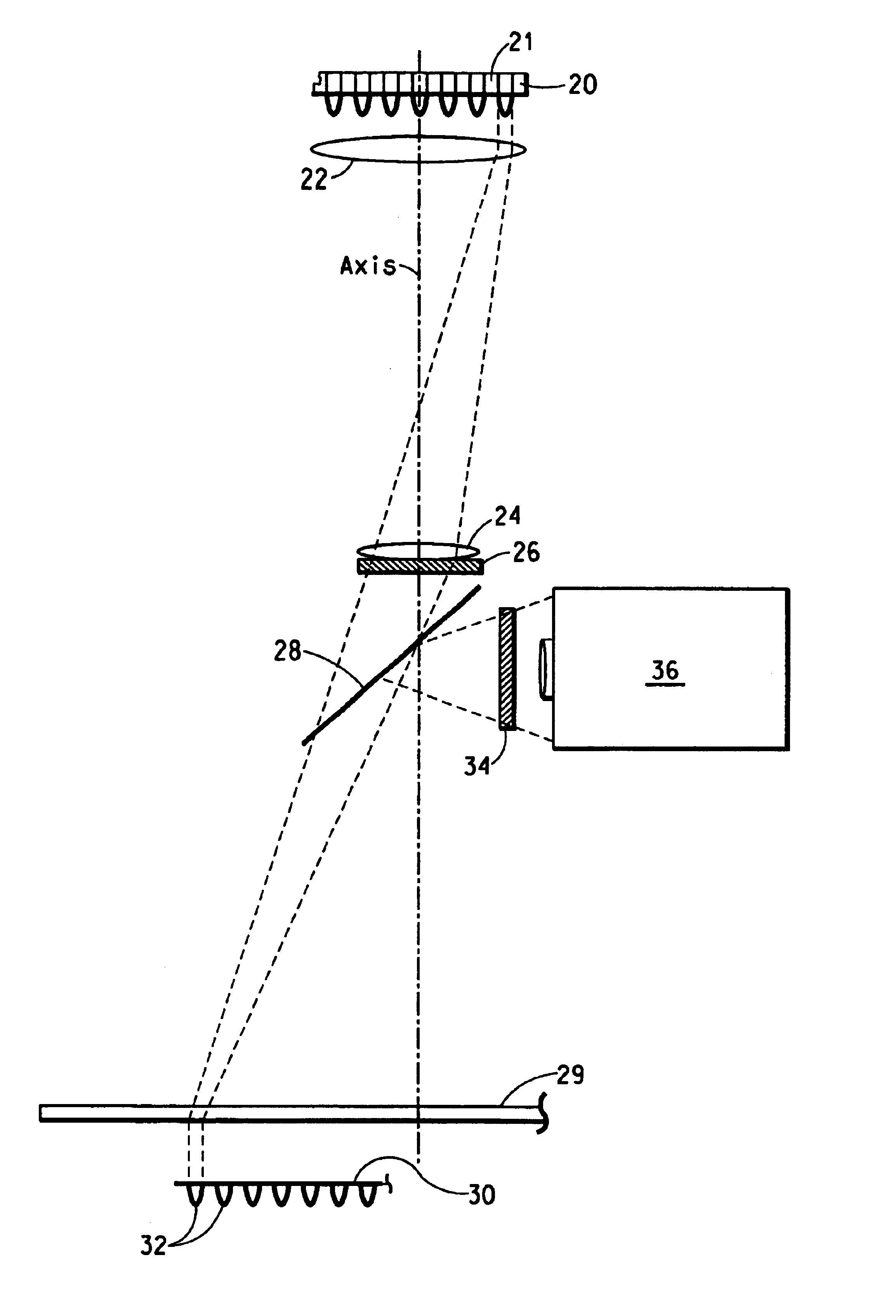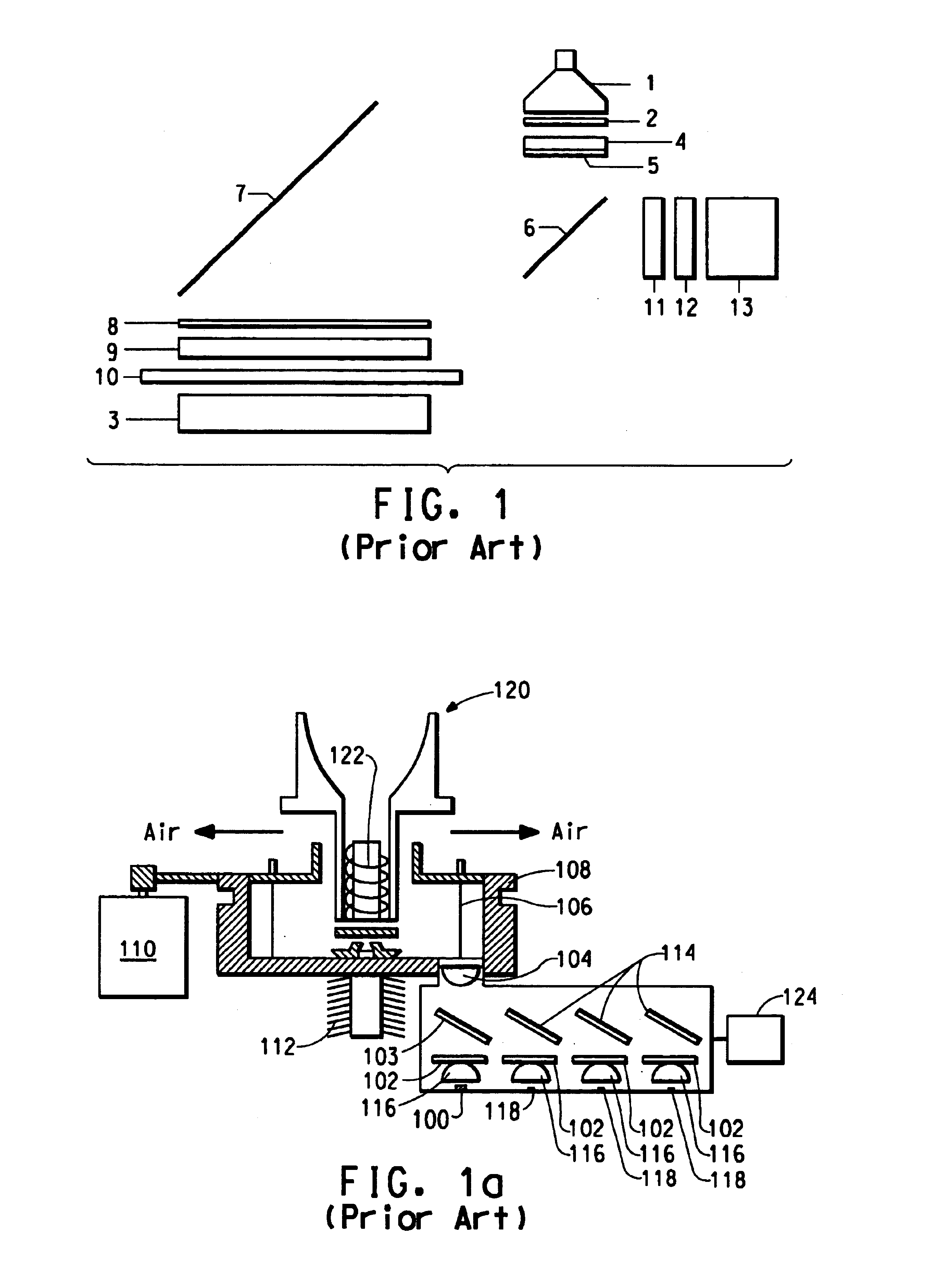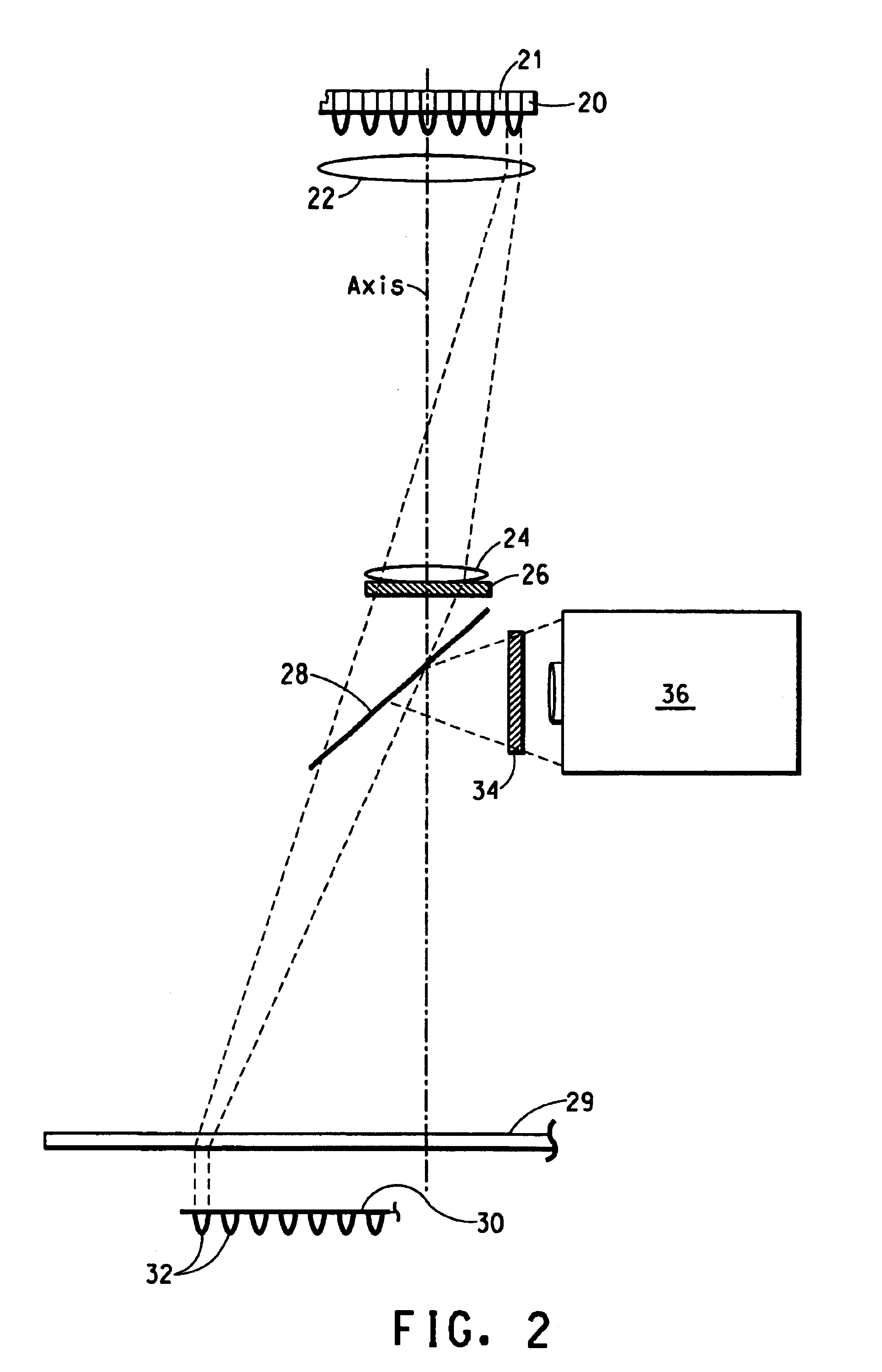Fluorometer with low heat-generating light source
a fluorometer and light source technology, applied in the field of instruments, can solve the problems of large amount of heat generated by instruments, many stand alone fluorometers and those combined with other instruments, and difficulty in obtaining very high intensity light in the proper wavelength from instruments,
- Summary
- Abstract
- Description
- Claims
- Application Information
AI Technical Summary
Benefits of technology
Problems solved by technology
Method used
Image
Examples
Embodiment Construction
To circumvent the difficulties described above, the fluorometer of the present invention preferably uses a plurality of light emitting diodes (LEDs) as the light sources. By using LEDs, a large amount of heat is not generated, thereby minimizing sample heating, easing heat dissipation problems, and extending the life of the light source. In addition, by providing a one-to-one correspondence of light source to sample container with the directed light falling inside the container, waste of excitation energy is largely eliminated allowing for the use of a light source that uses minimal power.
In addition to the advantageous arrangement of components of the first and second optical paths means, the present invention also has the benefit that for the plurality of potentially fluorescing samples, there is an equal number of low heat-generating light sources, and the output of any one of the light sources is dedicated to a particular, correspondingly positioned container containing the pote...
PUM
| Property | Measurement | Unit |
|---|---|---|
| included angle | aaaaa | aaaaa |
| temperatures | aaaaa | aaaaa |
| thick | aaaaa | aaaaa |
Abstract
Description
Claims
Application Information
 Login to View More
Login to View More - R&D
- Intellectual Property
- Life Sciences
- Materials
- Tech Scout
- Unparalleled Data Quality
- Higher Quality Content
- 60% Fewer Hallucinations
Browse by: Latest US Patents, China's latest patents, Technical Efficacy Thesaurus, Application Domain, Technology Topic, Popular Technical Reports.
© 2025 PatSnap. All rights reserved.Legal|Privacy policy|Modern Slavery Act Transparency Statement|Sitemap|About US| Contact US: help@patsnap.com



